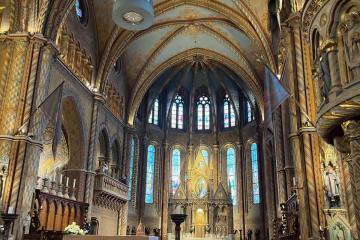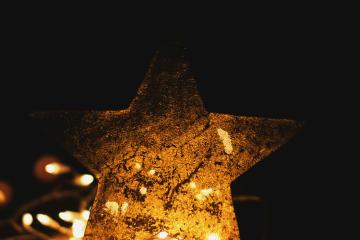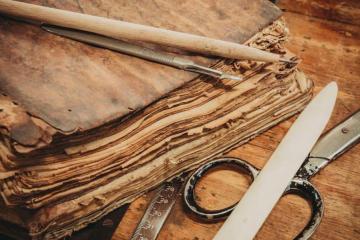More than twenty members of our Arts Society flew out in October 2025 for a short but fascinating trip discovering th
The Arts Society Norwich visits Cambridge - Kettle's Yard and The Fitzwilliam Museum
The Arts Society Norwich visits Cambridge - Kettle's Yard and The Fitzwilliam Museum
25 Jun 2023
The great thing about coach travel is to arrive fresh, not having to argue with the sat nav and when you eventually arrive at your destination not having to find a parking space.
The coach dropped us off a few yards from Kettle’s Yard, the former home of Jim Ede and his wife Helen. The house was created out of four dilapidated very narrow cottages plus a 1970's extension. His intention was to provide a home for his extensive collection of modern art, bric a brac and in Ede's words stray objects, now referred to as “founds”, which reflected his taste, and at the same time to be a reflective space for students.
You are instructed not to touch any of the objects on display, but you are encouraged to sit in any one of the number of chairs available so that you the visitor can experience what Ede had in mind to savour the space and lighting and try to understand why pictures are hung some 12 inches from the floor or ponder why a defoliated discarded yard broom head can compete with works of art.
Other questions come to mind as to how a lone lemon sitting on an eighteen-inch pewter plate relates to a nearby oil painting. Or why a two-foot-tall bronze dancer by Henri Gaudier-Brzeska stands close to the edge of a table - to be told that Ede placed it on that spot so that once a day the setting sun can bring her to life and allow her shadow to dance around the room. I also liked the use of an upcycled decorative iron grill used as the lower shelf to carry pot plants in the in-house conservatory.
My pareidolia was triggered by the largest found object on display, named by Ede as St. Edmund, an ebonised sculpture standing on a concrete building block, which holds its own against a piece by Henry Moore displayed a few feet away. It is not sculptured by human hands, but is thought to be the result of a lightning strike on a tree.
I cannot imagine living in the house. Where is the refrigerator, where is the television? But on the other hand there are two grand pianos. Ede did not want it to be an Art Gallery or a Museum, but that is what it has become, his presence can still be felt. It is not somewhere you visit, but somewhere you must visit to experience Ede, and see his positioning of his artworks alongside his found objects.
Whilst we waited our turn to visit the collection, the party was split up because the house is so small, we were able to see the current exhibition of the Austrian born potter Lucie Rie who sought and obtained refuge in this country in 1938. There was a delightful BBC film of her being interviewed by young David Attenborough, which brought her to life.
Then a short tour of Cambridge to be dropped off a few yards from the entrance to the Fitzwilliam where we were met by Arts Society lecturer Sarah Burles, whose lecture on Kettle’s Yard to our Society inspired this current trip. For convenience we were divided into two groups, which enabled us to view the Islanders exhibition: some 200 antiquities from three of the largest Islands of the Mediterranean. Among the 4000-year-old-treasures my favourite was a cute crawling child from Crete.
Afterwards we joined our guide Sarah who told us of the origin of the Museum founded by Lord Fitzwilliam with a bequest of his Dutch grandfather's art collection of Dutch Masters and additional works bought by him, together with funding for the building to house them. Sarah then talked us through the further development of the Museum by highlighting other pictures.
May I take this opportunity to thank Diana, Fay and Patricia for organising this enjoyable and informative trip.
About the Author
John Palmer
JOIN OUR MAILING LIST
Become an instant expert!
Find out more about the arts by becoming a Supporter of The Arts Society.
For just £20 a year you will receive invitations to exclusive member events and courses, special offers and concessions, our regular newsletter and our beautiful arts magazine, full of news, views, events and artist profiles.
FIND YOUR NEAREST SOCIETY
MORE FEATURES
Year in Review: A Remarkable Year for The Arts Society Mallorca
Our Heritage Volunteers are working as part of a team working on the rewarding book restoration proj




